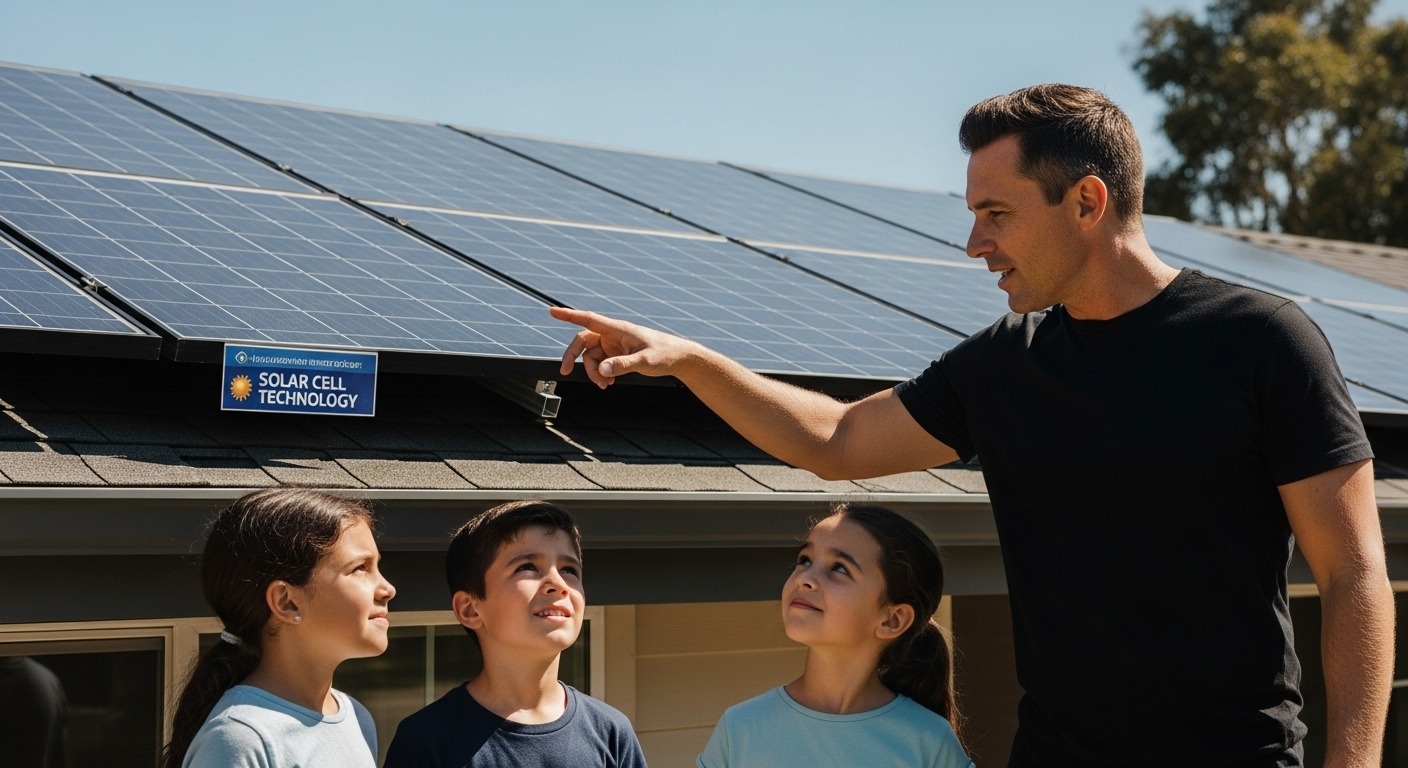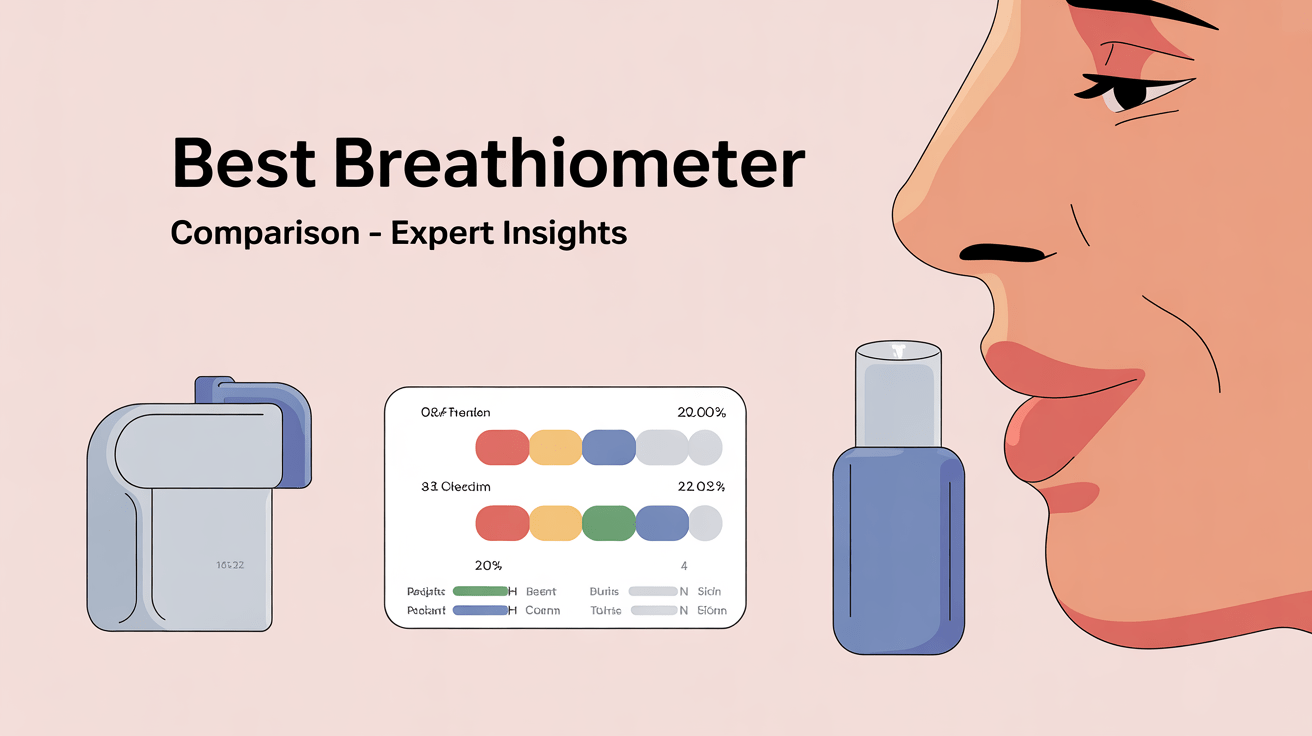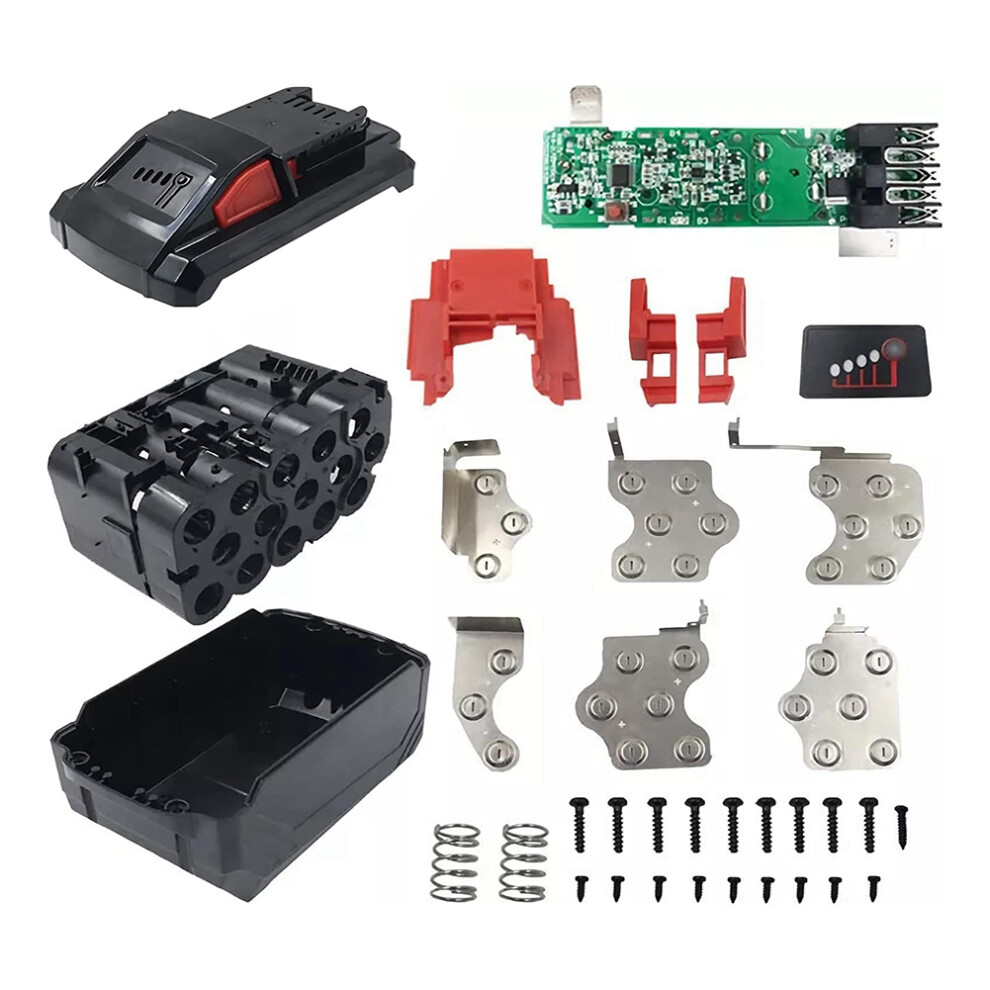

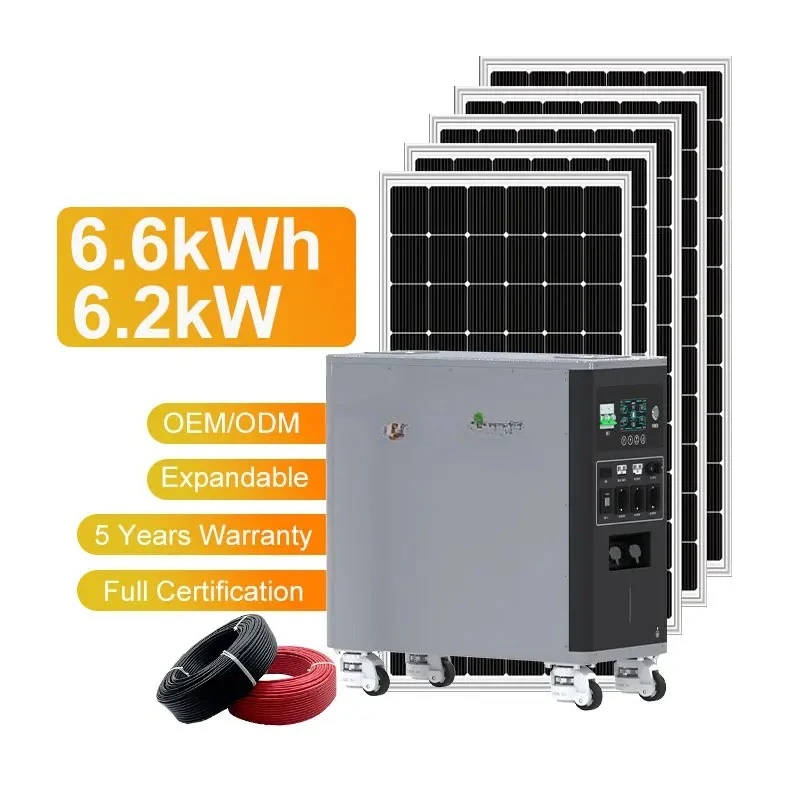
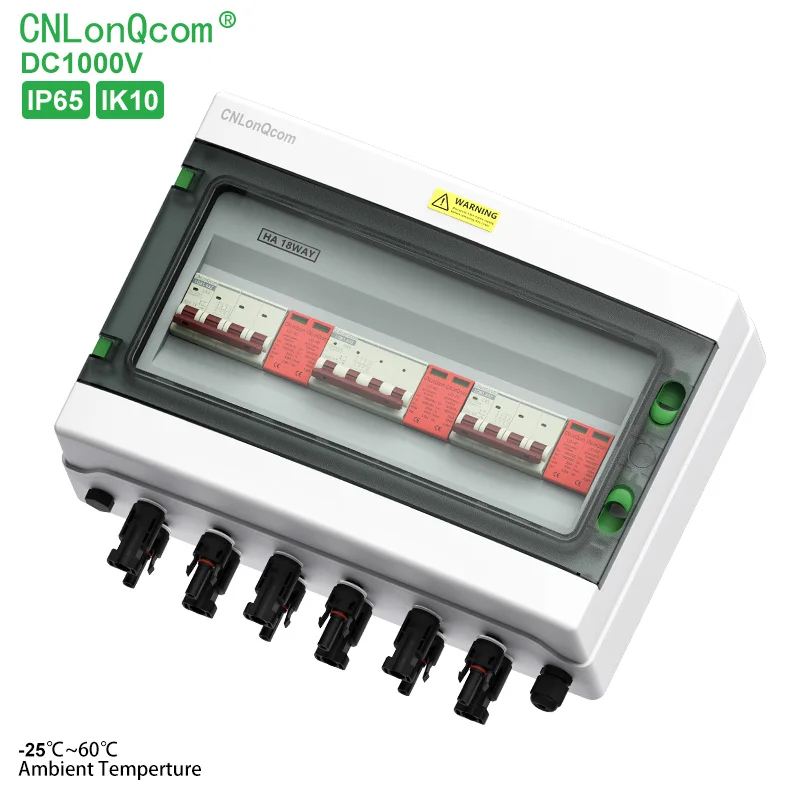

{
“@type”: “Article”,
“author”: {
“url”: “https://htexs.com”,
“name”: “Htexs”,
“@type”: “Organization”
},
“@context”: “https://schema.org”,
“headline”: “How to Save Solar Energy Efficiently in 2025”,
“publisher”: {
“url”: “https://htexs.com”,
“name”: “Htexs”,
“@type”: “Organization”
},
“inLanguage”: “en”,
“description”: “Discover how to save solar energy naturally with our step-by-step guide that ensures efficient utilization and optimal savings.”,
“datePublished”: “2025-09-17T19:00:42.472Z”,
“mainEntityOfPage”: “https://htexs.com/how-to-save-solar-energy”
}
Switching to solar might seem complicated but the benefits stack up fast and clear. Homes in the US now average 700 to 1,000 kilowatt-hours of electricity each month, and that adds up quickly in costs. Most people focus on the panels and forget the real secret is in knowing how every kilowatt gets used and stored. That shift in thinking can make all the difference for your wallet and your power bill.
Table of Contents
- Step 1: Assess Your Current Energy Consumption
- Step 2: Evaluate Available Solar Technologies
- Step 3: Install Solar Panels And Storage Systems
- Step 4: Optimize Energy Usage Habits
- Step 5: Monitor And Adjust Your Solar Energy System
Quick Summary
| Key Point | Explanation |
|---|---|
| 1. Assess Your Energy Consumption First | Analyze your past electricity bills to understand usage patterns and peak periods, forming a baseline for solar energy system design. |
| 2. Evaluate Suitable Solar Technologies | Research different solar storage technologies like lithium-ion batteries and thermal storage for optimal energy efficiency fitting your needs. |
| 3. Ensure Proper Installation Procedures | Schedule site evaluations with certified installers to prepare the property for solar panel implementation and ensure compliance with regulations. |
| 4. Optimize Your Energy Usage Habits | Shift high-energy tasks to peak sunlight hours and reduce consumption by using energy-efficient appliances for better solar investment returns. |
| 5. Regularly Monitor System Performance | Employ monitoring tools for ongoing insights into system efficiency, allowing for proactive adjustments to maintain energy production levels. |
Step 1: Assess Your Current Energy Consumption
Understanding your current energy consumption is the critical first step in efficiently saving solar energy. This foundational assessment will help you design a solar storage strategy tailored to your specific household or business needs. Before investing in solar energy systems, you need a comprehensive view of your current electricity usage patterns and potential optimization opportunities.
Tracking Your Energy Profile
To begin your assessment, gather your electricity bills from the past 12 months. These documents provide a detailed record of your monthly and seasonal energy consumption. Look for patterns in your usage data, paying special attention to peak consumption periods and total kilowatt-hour (kWh) measurements. According to research from the U.S. Department of Energy, understanding historical energy consumption is crucial for developing a cost-effective solar energy system.
Carefully analyze your bills and calculate your average monthly electricity usage. Most residential properties consume between 700 to 1,000 kWh per month, but this can vary significantly based on home size, appliance efficiency, and personal habits. Create a spreadsheet to track these details, noting high-consumption months and potential areas for reduction.
Advanced Assessment Techniques
For a more precise evaluation, consider using modern energy monitoring tools. Smart home energy monitors can provide real-time insights into your electricity consumption, breaking down usage by individual appliances and circuits. These devices help you identify energy-hungry systems and potential inefficiencies that might impact your solar energy storage strategy.
Some advanced monitoring systems offer smartphone apps that provide detailed energy consumption analytics. By understanding exactly where and when you use electricity, you can make informed decisions about solar panel capacity, battery storage requirements, and potential energy-saving modifications. Look for monitors that offer:
- Detailed circuit-level energy tracking
- Historical consumption comparisons
- Predictive energy use forecasting
- Integration with smart home systems
Successful completion of this assessment means you have a clear, comprehensive understanding of your energy consumption patterns. Your documented energy profile will serve as the foundation for designing an efficient solar energy storage solution that meets your specific needs. The insights gained here will directly inform subsequent steps in your solar energy optimization journey.
Step 2: Evaluate Available Solar Technologies
After assessing your energy consumption, the next critical step is understanding the solar technologies available for efficient energy storage. This evaluation will help you select the most appropriate system that matches your specific energy requirements and budget constraints.
Solar Storage Technology Landscape
Solar energy storage technologies have evolved significantly in recent years, offering multiple options for capturing and preserving renewable energy. Batteries represent the most common and accessible storage solution, with lithium-ion technologies leading the market. These batteries provide high energy density, longer lifespans, and faster charging capabilities compared to traditional storage methods. According to research from the U.S. Department of Energy, understanding the nuanced differences between storage technologies is crucial for making an informed decision.
Beyond traditional batteries, emerging technologies like thermal energy storage systems and advanced molecular photoswitches offer promising alternatives. Thermal storage solutions use materials that can absorb and retain heat, converting solar energy into storable thermal potential. These systems are particularly effective in regions with consistent sunlight and temperature variations. Molecular photoswitches represent a cutting-edge approach, utilizing specialized chemical compounds that can store and release energy through molecular transformations.
Comparative Assessment Strategies
To effectively evaluate solar storage technologies, develop a comprehensive comparison framework. Consider key performance metrics such as:
- Energy Density: How much energy can be stored per unit volume
- Efficiency Rating: Percentage of captured energy successfully stored and retrieved
- Lifespan: Expected operational duration before significant performance degradation
- Cost per Kilowatt-Hour: Initial investment and long-term operational expenses
- Environmental Impact: Carbon footprint and sustainability of the technology
Research multiple manufacturers and technologies, request detailed specification sheets, and schedule consultations with solar energy professionals. Many companies offer free assessments that can provide personalized recommendations based on your specific energy profile.
Successful completion of this step means you have a clear understanding of available solar storage technologies, their strengths, limitations, and potential alignment with your energy needs. The insights gained will directly inform your technology selection and subsequent implementation strategy.
Here is a comparison table summarizing the main home solar storage technologies discussed in the article, including their key features, performance metrics, and typical use cases for easy evaluation.
| Technology | Key Features | Performance Highlights | Suitable For |
|---|---|---|---|
| Lithium-ion Batteries | High energy density, long lifespan | Fast charging, widely available | Most residential solar systems |
| Thermal Energy Storage | Stores solar as heat, uses phase-change | Good for regions with consistent sunlight | Areas with temperature variation |
| Molecular Photoswitches | Stores energy via chemical transformations | Innovative, emerging tech | Early adopters, future solutions |
Step 3: Install Solar Panels and Storage Systems
Transitioning from technology evaluation to actual installation represents a pivotal moment in your solar energy journey. This step transforms theoretical planning into tangible renewable energy infrastructure, requiring careful preparation and strategic execution.
Professional Assessment and Site Preparation
Before installation begins, schedule a comprehensive site evaluation with certified solar installers. These professionals will conduct a detailed analysis of your property’s solar potential, examining roof structural integrity, sun exposure, and potential shading obstacles. Roof orientation and angle significantly impact solar panel efficiency, with south-facing surfaces in the Northern Hemisphere typically providing optimal performance. According to research from the U.S. Department of Energy, precise system design can dramatically improve annual energy production and minimize long-term operational costs.
Prepare your installation site by clearing any potential obstructions and ensuring electrical systems meet current building codes. This might involve upgrading your electrical panel or reinforcing roof structures to support solar panel mounting. Professional installers will conduct comprehensive structural assessments, identifying and addressing potential challenges before equipment placement.
Installation and System Integration
The actual installation process involves multiple critical steps. Solar panels will be strategically mounted using specialized racking systems designed to withstand local weather conditions. Installers will carefully wire panels to inverters, which convert direct current (DC) electricity into alternating current (AC) electricity usable by household appliances. Battery storage systems will be integrated to capture and store excess energy generated during peak sunlight hours.
Key considerations during installation include:
- Precise panel positioning for maximum sun exposure
- Secure mounting to prevent wind damage
- Proper electrical connections and grounding
- Compatibility between solar panels, inverters, and storage systems
- Compliance with local building and electrical regulations
After physical installation, technicians will conduct comprehensive system testing to verify performance, checking voltage output, battery charging capabilities, and overall system efficiency. They will also configure monitoring systems that allow you to track energy production and consumption in real-time.
Successful completion of this step means you have a fully functional solar energy system professionally installed, calibrated, and ready to generate and store renewable electricity tailored to your specific energy needs.
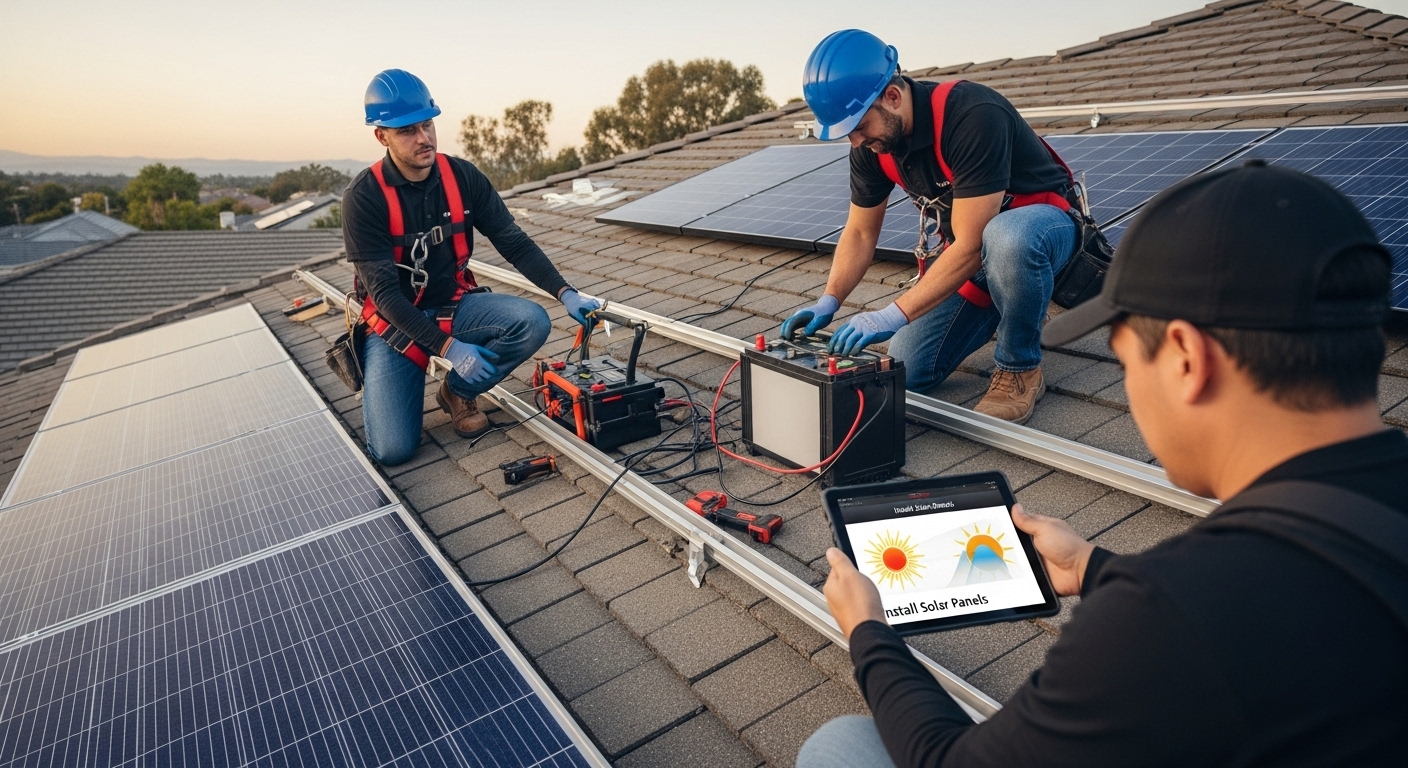
Step 4: Optimize Energy Usage Habits
Optimizing energy usage represents the critical bridge between solar panel installation and maximizing your renewable energy potential. This step transforms your solar investment from passive infrastructure into an actively managed, efficient energy ecosystem that reduces waste and maximizes savings.
Strategic Energy Consumption Techniques
Start by understanding your household’s energy consumption patterns through detailed monitoring. Smart home energy management systems provide real-time insights into electricity usage across different appliances and circuits. These intelligent systems help you identify energy-hungry devices and create targeted reduction strategies. According to research integrating attention networks in home energy management, advanced machine learning techniques can provide unprecedented accuracy in predicting and managing energy consumption.
Implement a comprehensive energy reduction strategy by replacing inefficient appliances with energy-star rated alternatives. Focus on high-consumption devices like refrigerators, washing machines, and HVAC systems. Consider using smart power strips that automatically cut power to devices in standby mode, eliminating phantom energy drain that silently increases your electricity consumption.
Behavioral Modifications and Technology Integration
Develop a household energy consumption rhythm that aligns with your solar system’s generation capacity. Schedule high-energy activities during peak sunlight hours when solar panels produce maximum electricity.
![]() This might include running dishwashers, charging electric vehicles, or operating energy-intensive equipment during midday when solar production is at its highest.
This might include running dishwashers, charging electric vehicles, or operating energy-intensive equipment during midday when solar production is at its highest.
Utilize smart home technologies to automate energy management. Programmable thermostats can adjust temperature settings based on occupancy and time of day, while smart lighting systems can reduce unnecessary electricity usage. Consider these key optimization strategies:
- Schedule appliance usage during peak solar production hours
- Use motion sensors to control lighting and reduce waste
- Implement zoned heating and cooling for precise energy control
- Leverage machine learning technologies for predictive energy management
Regularly review your energy consumption data, looking for patterns and opportunities to further reduce waste. Many solar energy monitoring systems offer detailed analytics that can help you understand your progress and identify additional optimization opportunities. Success in this step means creating a dynamic, intelligent approach to energy consumption that maximizes your solar investment and minimizes unnecessary electricity usage.
Step 5: Monitor and Adjust Your Solar Energy System
Monitoring and adjusting your solar energy system represents the ongoing maintenance phase that ensures long-term efficiency and optimal performance. This critical step transforms your solar installation from a static infrastructure into a dynamic, responsive energy ecosystem that continuously adapts to changing environmental and household conditions.
Advanced Monitoring Technologies
Implement a comprehensive monitoring strategy using sophisticated digital platforms that provide real-time insights into your solar energy system’s performance. Modern solar monitoring applications offer detailed dashboards displaying energy generation, consumption patterns, battery storage levels, and potential system inefficiencies. These platforms enable you to track your system’s performance minute-by-minute, identifying potential issues before they become significant problems. According to research from the Environmental and Energy Study Institute, proactive monitoring is essential for maximizing solar energy savings and efficiency.
Invest in smart monitoring hardware that integrates seamlessly with your solar panels and battery storage systems. These devices collect granular data about voltage output, temperature variations, and energy conversion rates. Look for monitoring solutions that offer mobile app integration, allowing you to track your system’s performance from anywhere using smartphone or tablet devices.
Systematic Performance Evaluation
Develop a structured approach to periodic system assessments. Schedule quarterly comprehensive evaluations that include physical inspections of solar panels, checking for dust accumulation, potential damage, or reduced efficiency. Clean solar panels regularly to maintain optimal energy generation, as even minor dirt buildup can significantly reduce electrical output. Pay special attention to potential obstructions like growing tree branches or new construction that might cast shadows on your solar array.
Key monitoring and adjustment strategies include:
- Track daily and monthly energy generation metrics
- Compare actual performance against initial system projections
- Investigate and address any unexpected drops in energy production
- Update software and firmware for monitoring systems
- Consult professional technicians for annual comprehensive system checkups
Maintain detailed records of your system’s performance, creating a historical log that can help identify long-term trends and potential degradation. Many modern monitoring platforms automatically generate comprehensive reports, simplifying the documentation process. Success in this step means developing a proactive, data-driven approach to solar energy system management that ensures consistent performance and maximizes your renewable energy investment.
Below is a checklist table outlining key verification steps and system maintenance tasks to ensure your solar energy installation remains efficient and effective throughout its operational life.
| Checkpoint or Task | Frequency | What to Look For | Outcome/Why Important |
|---|---|---|---|
| Inspect solar panel surfaces for dust, debris, damage | Quarterly | Cleanliness, cracks, shading | Maintains optimal energy production |
| Check battery/storage system health | Quarterly | Charge/discharge cycles, capacity retention | Extends storage lifespan |
| Review monitoring system analytics | Monthly | Drops in output, usage anomalies | Pinpoint issues early |
| Update software/firmware for monitoring hardware | As needed | New features, bug fixes | Ensures accurate data and compatibility |
| Schedule technician annual system inspection | Annually | Comprehensive system performance | Addresses potential hidden issues |
Ready to Maximize Your Solar Energy Savings in 2025?
Are you feeling overwhelmed by the challenge of tracking energy consumption, choosing the best solar storage technology, and optimizing your electricity habits for real savings? You are not alone. Many people want to take full advantage of efficient solar energy but struggle with analyzing usage patterns and making sense of complex product options. Getting the right information is the key to transforming your solar setup into a smart investment that pays off for your home or business.

Let HTEXS make your next step easier. Our comprehensive product reviews and how-to guides break down the latest solar technologies in simple terms. You will find honest insights on batteries, smart monitoring systems, and energy-saving gadgets designed for 2025 and beyond. If you want to compare your options or need expert hints on what works best for your specific needs, explore our latest solar technology articles today. Get informed, act now, and make smarter solar decisions with HTEXS for a future of greater energy efficiency.
Frequently Asked Questions
How can I assess my current energy consumption before installing solar panels?
To assess your current energy consumption, gather your electricity bills from the past 12 months to identify usage patterns. Calculate your average monthly electricity usage and create a spreadsheet to track high-consumption months.
What types of solar storage technologies are available for home use?
Common solar storage technologies include lithium-ion batteries, thermal energy storage systems, and emerging technologies like molecular photoswitches. Each has its strengths in terms of energy density, efficiency, lifespan, and cost.
What are the key steps during the installation of solar panels and storage systems?
Key steps in solar installation include a site evaluation for sun exposure and structural integrity, preparing the site, mounting the panels, wiring them to inverters, and integrating battery storage systems for excess energy.
How can I optimize my energy usage habits after installing solar panels?
To optimize energy usage, schedule high-energy activities during peak sunlight hours, replace inefficient appliances, and utilize smart home technologies for automated energy management and monitoring.
Recommended
- How Much Do Solar Panels Save in 2025 – htexs.com
- Tips And Techniques – htexs.com
- Perovskite Solar Cells 2025: Breakthrough Tech Unveiled
- Solar Backpack: Your Ultimate Hiking Companion for Uninterrupted Adventures! – htexs.com





